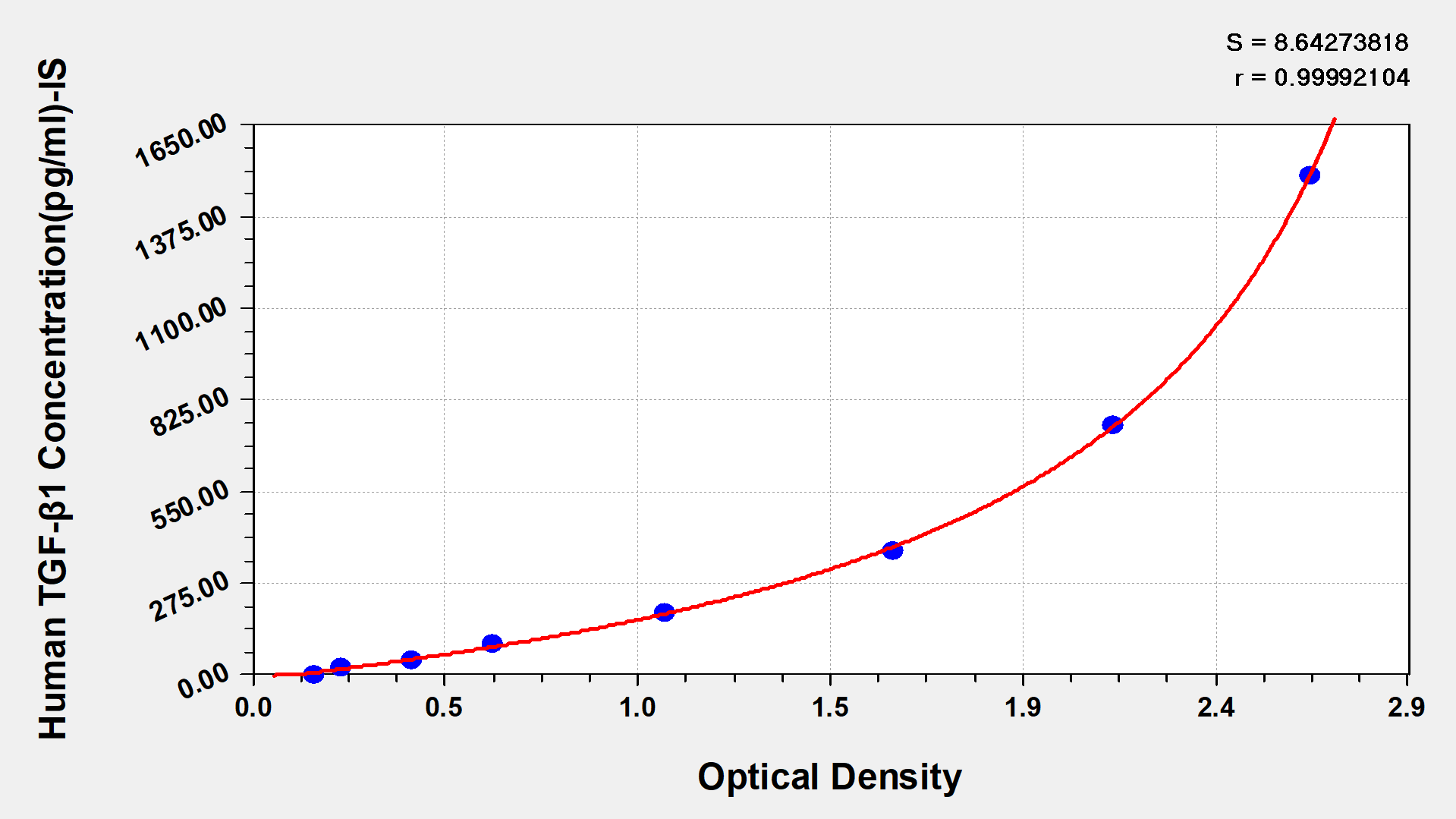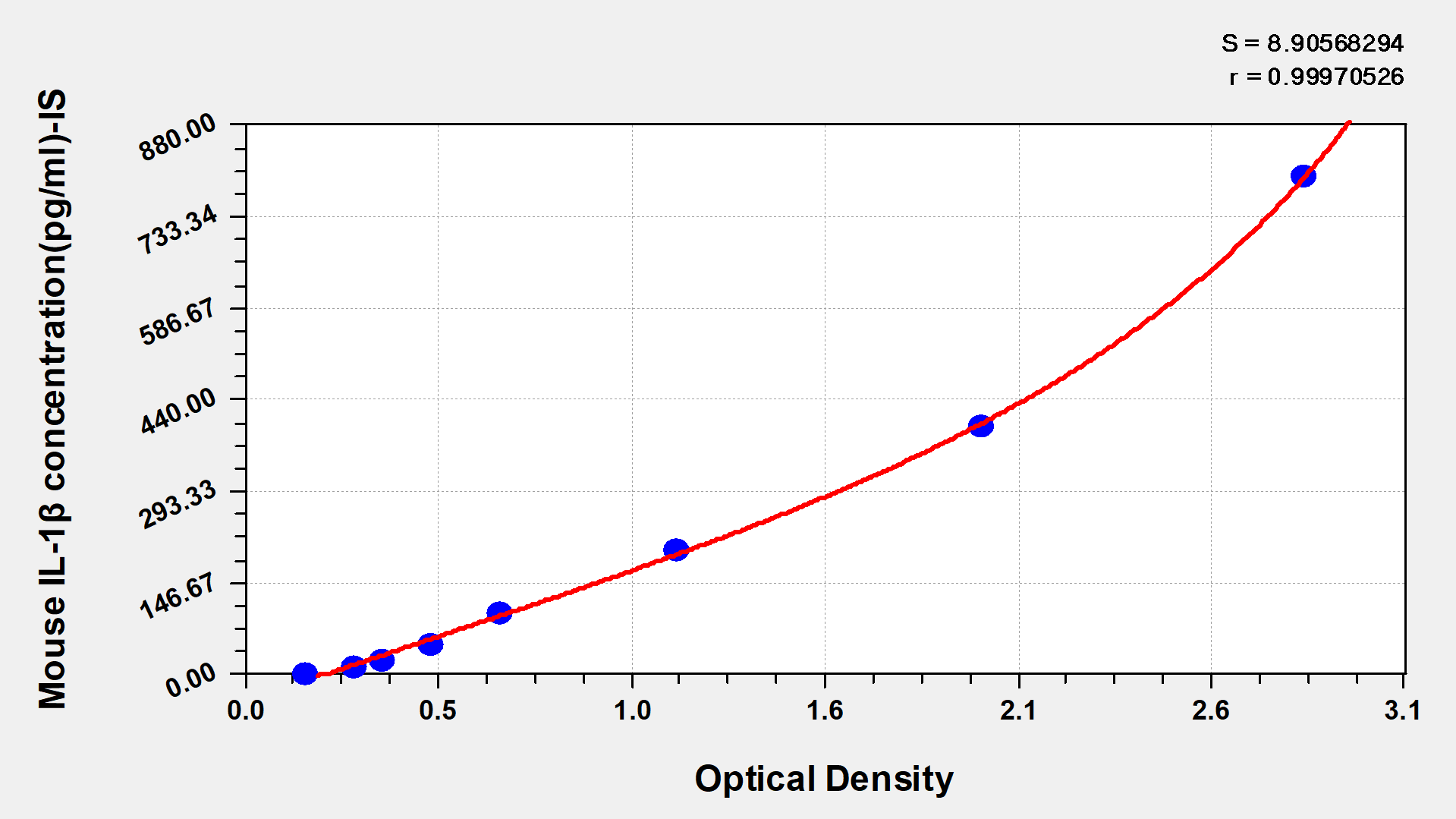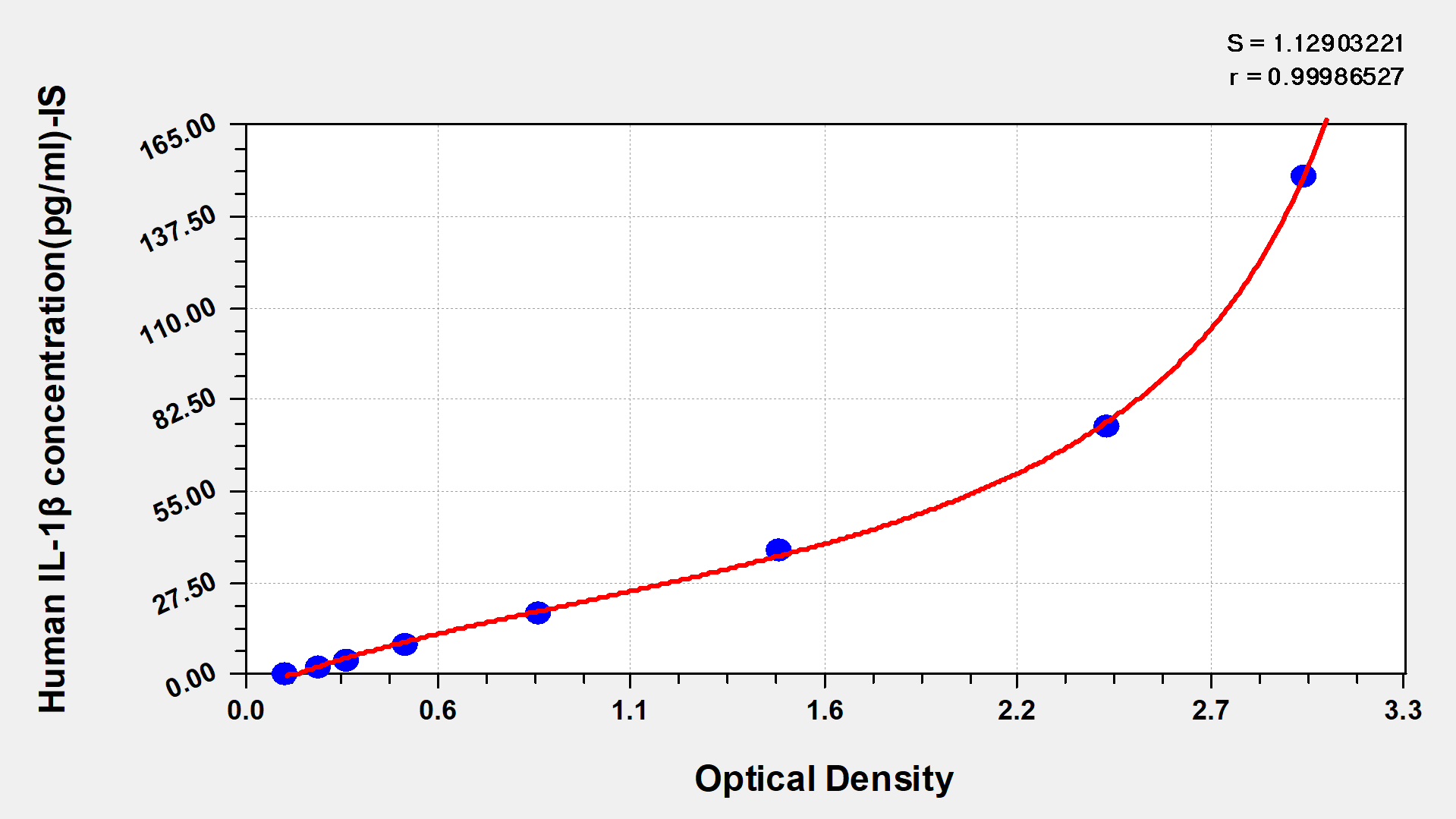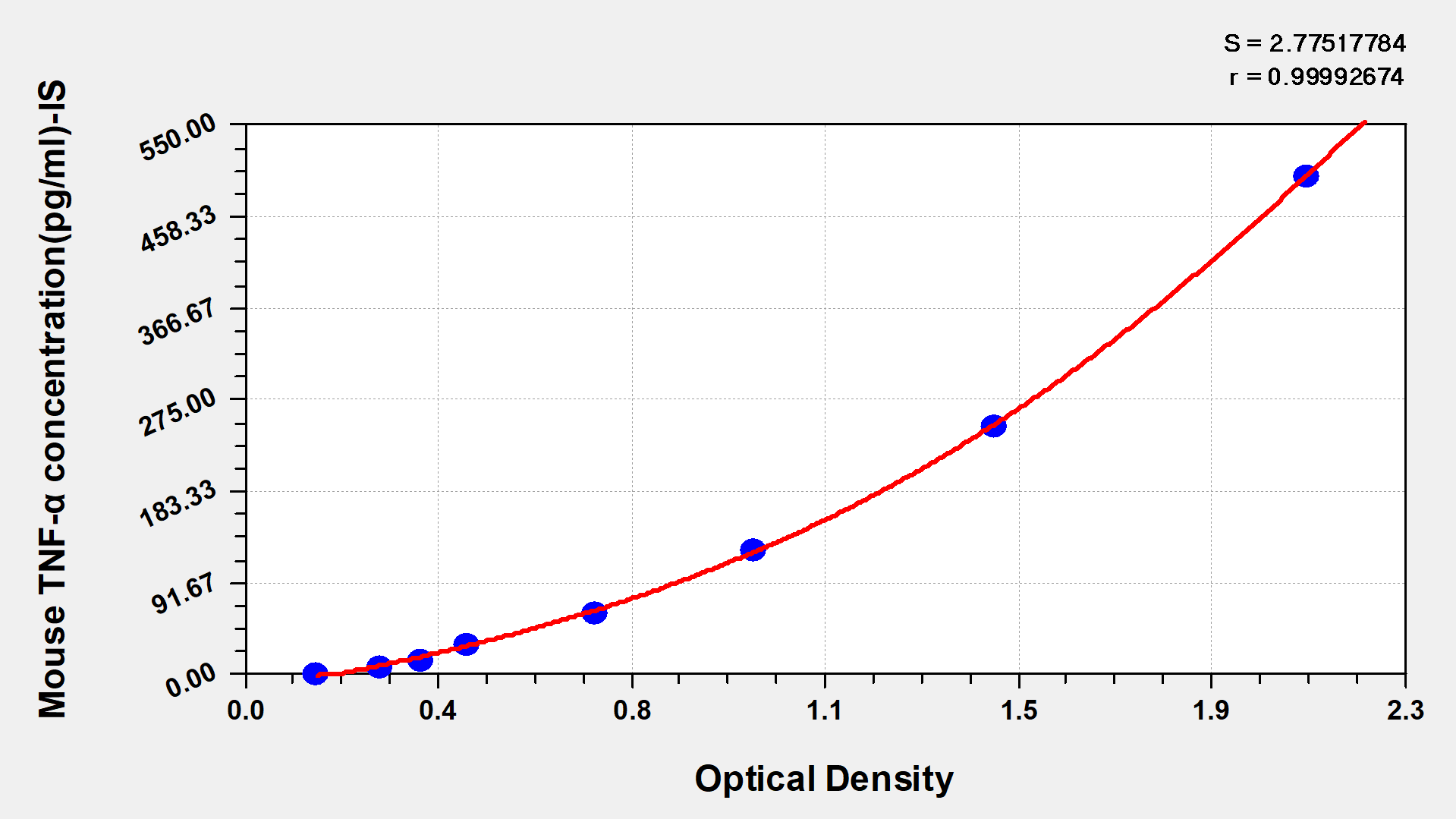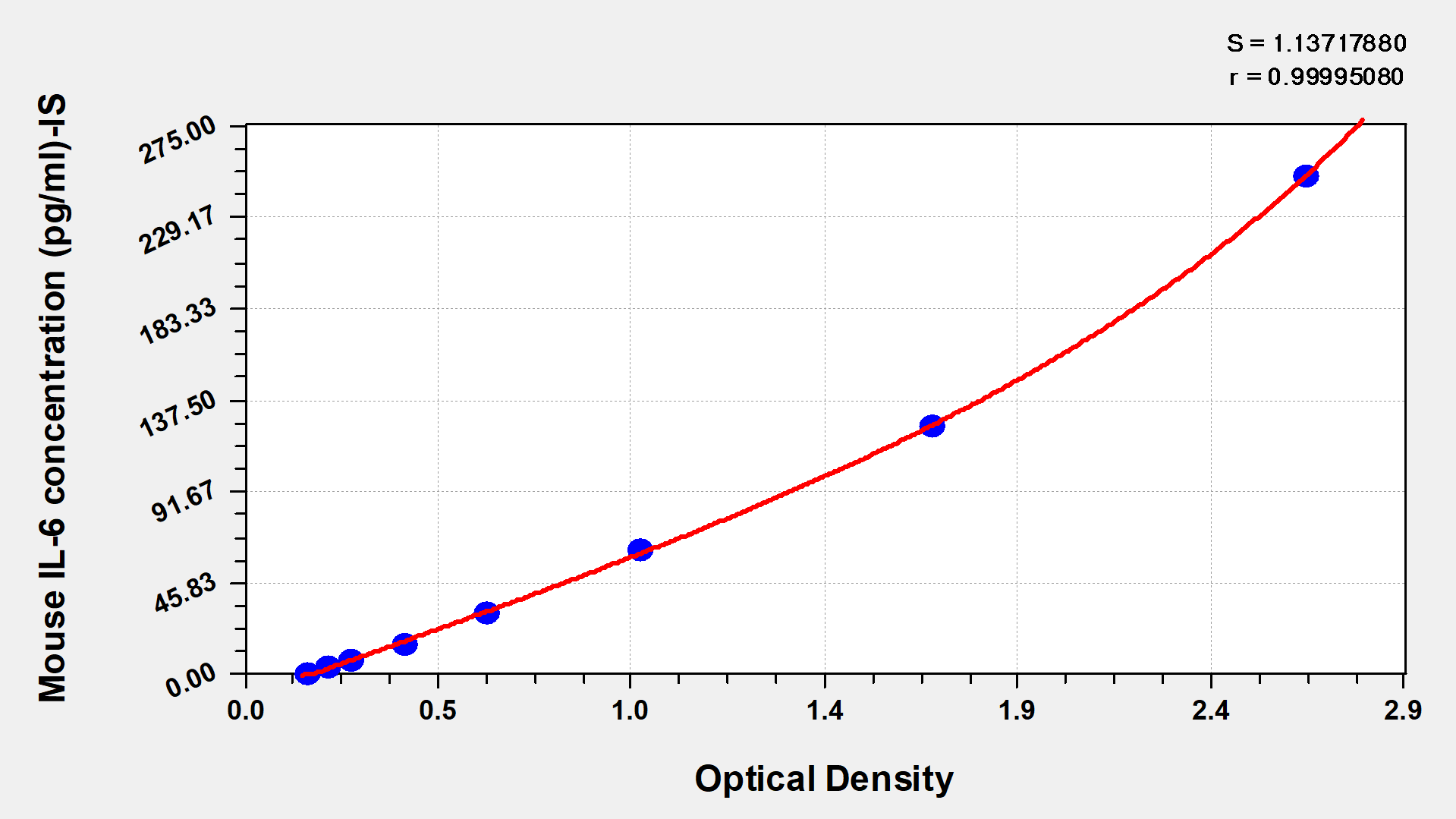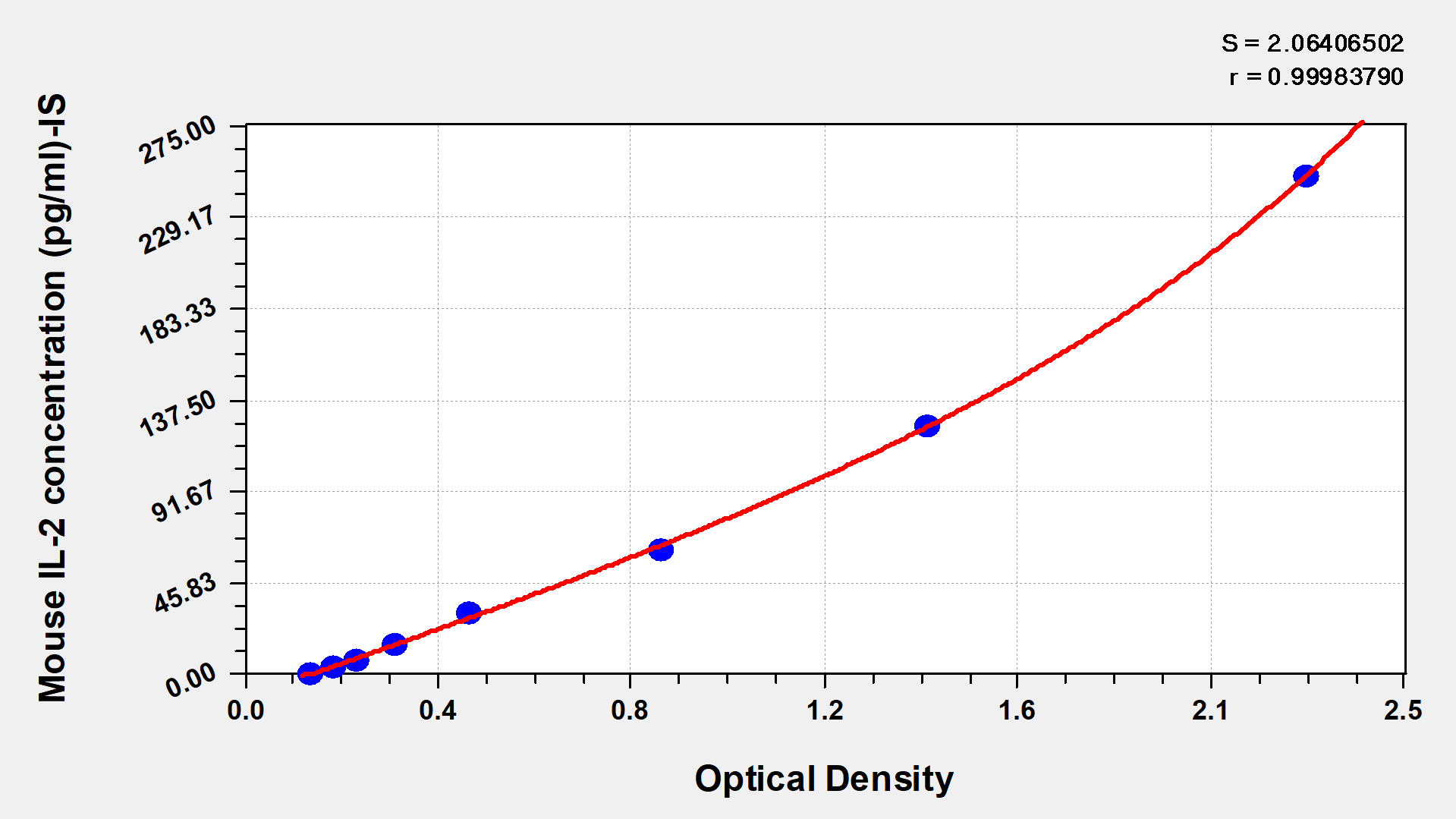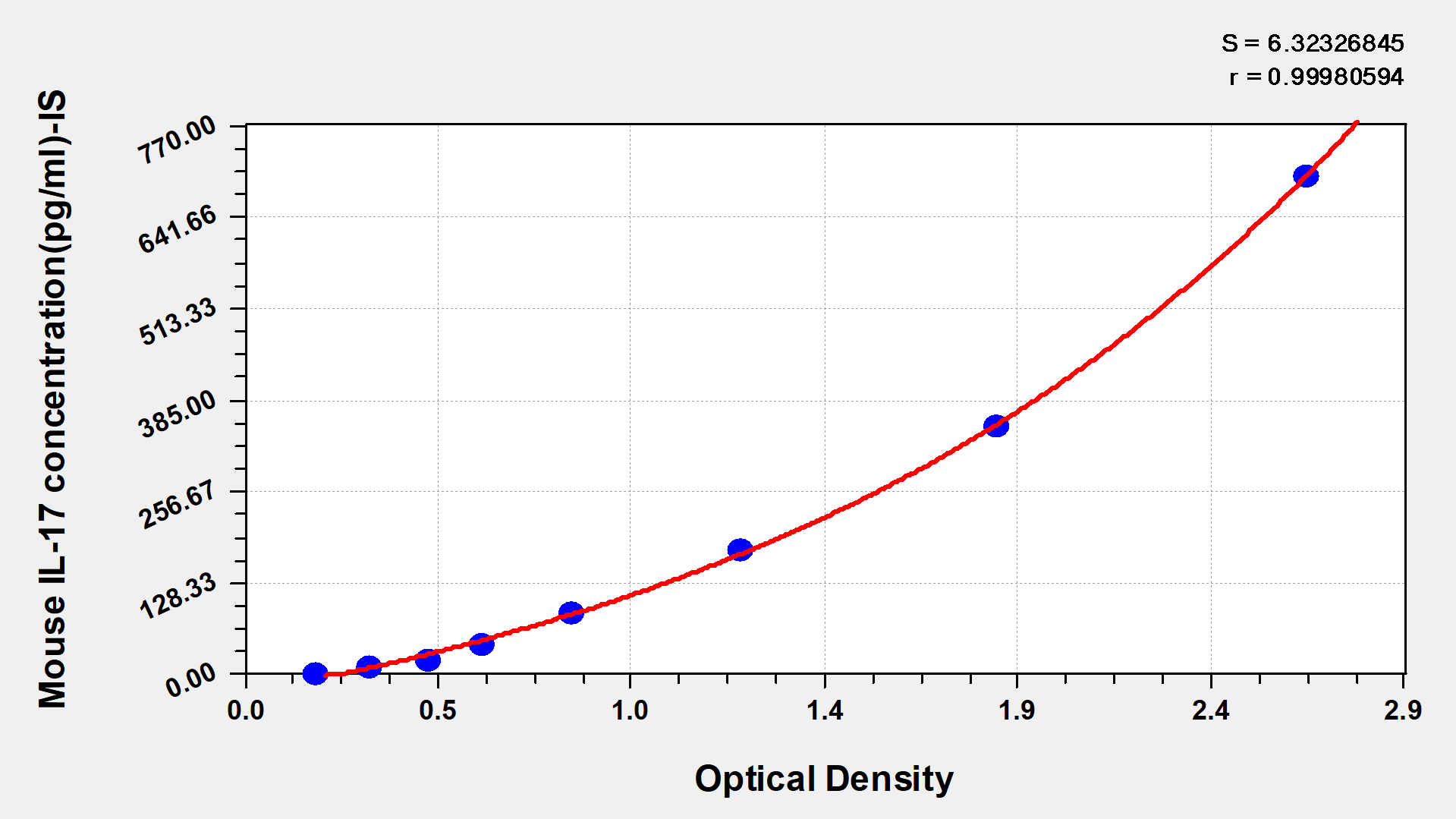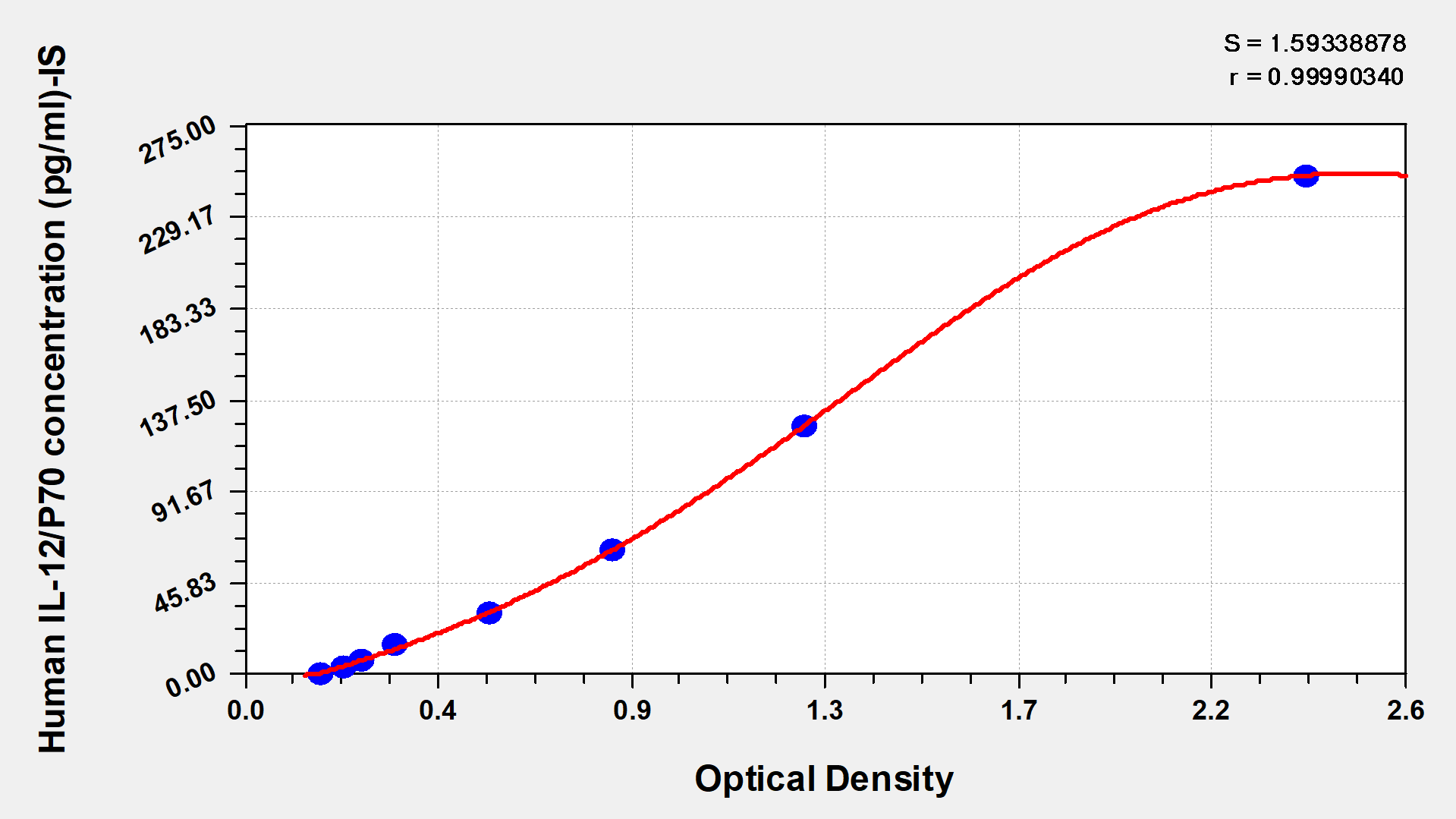Human Legumain(LGMN) ELISA kit
-
中文名称:人豆荚蛋白(LGMN)酶联免疫试剂盒
-
货号:CSB-EL012903HU
-
规格:96T/48T
-
价格:¥3600/¥2500
-
其他:
产品详情
-
产品描述:人豆荚蛋白(LGMN)酶联免疫试剂盒(CSB-EL012903HU)为双抗夹心法ELISA试剂盒,定量检测血清、血浆、组织匀浆样本中的LGMN含量。LGMN是一种靶点。它在人体生理中可能发挥特定作用。研究上,主要聚焦其在相关疾病发生发展机制中的影响,探寻其与疾病信号通路、细胞功能等方面的关联,以此为基础有望开发出针对LGMN的治疗策略和药物。试剂盒检测范围为62.5 pg/mL-4000 pg/mL,灵敏度为15.6 pg/mL。本试剂盒适用于基础医学研究、药物开发筛选及疾病分子机制探索等场景,为研究LGMN在炎症反应、癌症微环境调控或神经病理学中的作用提供可靠工具,特别适用于需要多类型样本联合分析的实验设计,其宽泛的检测范围可覆盖生理及病理状态下的蛋白表达水平变化。本品仅用于科研,不用于临床诊断,产品具体参数及操作步骤详见产品说明书。
-
别名:AEP ELISA Kit; Asparaginyl endopeptidase ELISA Kit; cysteine 1 ELISA Kit; Cysteine protease 1 ELISA Kit; EC 3.4.22.34 ELISA Kit; Legumain ELISA Kit; LGMN ELISA Kit; LGMN_HUMAN ELISA Kit; LGMN1 ELISA Kit; Protease ELISA Kit; Protease cysteine 1 (legumain) ELISA Kit; Protease cysteine 1 ELISA Kit; PRSC1 ELISA Kit
-
缩写:
-
Uniprot No.:
-
种属:Homo sapiens (Human)
-
样本类型:serum, plasma, tissue homogenates
-
检测范围:62.5 pg/mL-4000 pg/mL
-
灵敏度:15.6 pg/mL
-
反应时间:1-5h
-
样本体积:50-100ul
-
检测波长:450 nm
-
研究领域:Cancer
-
测定原理:quantitative
-
测定方法:Sandwich
-
精密度:
Intra-assay Precision (Precision within an assay): CV%<8%
Three samples of known concentration were tested twenty times on one plate to assess.
Inter-assay Precision (Precision between assays): CV%<10%
Three samples of known concentration were tested in twenty assays to assess.
Intra-Assay Precision
Inter-Assay Precision
Sample
1
2
3
1
2
3
n
20
20
20
20
20
20
Mean(pg/ml)
517.073
505.781
486.170
497.353
507.189
517.073
SD
0.030
0.032
0.026
0.038
0.035
0.051
CV(%)
5.217
5.644
4.702
6.774
6.162
8.870
-
线性度:
To assess the linearity of the assay, samples were spiked with high concentrations of human LGMN in various matrices and diluted with the Sample Diluent to produce samples with values within the dynamic range of the assay.
Sample
Serum(n=4)
1:2
Average %
93
Range %
85-102
1:4
Average %
90
Range %
84-100
1:8
Average %
95
Range %
85-102
1:16
Average %
95
Range %
89-102
-
回收率:
The recovery of human LGMN spiked to levels throughout the range of the assay in various matrices was evaluated. Samples were diluted prior to assay as directed in the Sample Preparation section.
Sample Type
Average % Recovery
Range%
Serum (n=5)
96
84-105
EDTA plasma (n=4)
97
81-105
-
标准曲线:
These standard curves are provided for demonstration only. A standard curve should be generated for each set of samples assayed.

pg/ml
OD1
OD2
Average
Corrected
4000
2.300
2.312
2.306
2.155
2000
1.395
1.395
1.395
1.244
1000
0.886
0.855
0.870
0.719
500
0.581
0.593
0.587
0.436
250
0.369
0.351
0.360
0.209
125
0.260
0.262
0.261
0.110
62.5
0.205
0.216
0.211
0.060
0
0.154
0.148
0.151
-
数据处理:
-
货期:3-5 working days
相关产品
靶点详情
-
功能:Has a strict specificity for hydrolysis of asparaginyl bonds. Can also cleave aspartyl bonds slowly, especially under acidic conditions. Required for normal lysosomal protein degradation in renal proximal tubules. Required for normal degradation of internalized EGFR. Plays a role in the regulation of cell proliferation via its role in EGFR degradation. May be involved in the processing of proteins for MHC class II antigen presentation in the lysosomal/endosomal system.
-
基因功能参考文献:
- Studies identified Legumain (LGMN) as a new target which is highly expressed in the tumor microenvironment and in tumor cells. [review] PMID: 27993111
- our results suggest that M2 tumour-associated macrophages affect degradation of the extracellular matrix and angiogenesis via overexpression of legumain, and therefore play an active role in the progression of DLBCL. PMID: 27464733
- Legumain regulates oxLDL-induced macrophage apoptosis by enhancing the autophagy pathway. PMID: 29414692
- MiRNA-3978 regulates peritoneal gastric cancer metastasis by targeting legumain expression, promoting cell migration/neoplasm invasiveness. PMID: 27793040
- These results showed that Asparaginyl endopeptidase could promote invasion and metastasis by modulating epithelial-to-mesenchymal transition. PMID: 27102302
- Our data suggest that altered proteolytic activity of legumain in the bone microenvironment contributes to decreased bone mass in postmenopausal osteoporosis. PMID: 28162997
- Legumain is increased in both plasma and plaques of patients with carotid stenosis and might be a new and early biomarker of atherosclerosis. PMID: 27940038
- Data suggest that melanoma cells internalize/absorb cystatin C from culture media, leading to increased intracellular cystatin C levels; cystatin E/M is internalized as well but at modest rate due to down-regulation of cell migration; however, the effect of intracellular cystatin E/M on down-regulation of legumain activity is pronounced. PMID: 28630039
- AEP is activated and cleaves human alpha-synuclein at N103 in an age-dependent manner. PMID: 28671665
- AEP promotes activation of the PI3K-AKT signaling pathway in prostate cancer cells. PMID: 27590439
- upregulation of legumain is associated with malignant behavior of uveal melanoma. PMID: 26846877
- Studies indicate that legumain, usually in lysosomes, is also found extracellularly and even translocates to the cytosol and the nucleus. PMID: 26403494
- legumain might play an important role in cervical cancer cell migration and invasion. PMID: 26802645
- Legumain appears to be involved in tumor development and deterioration. PMID: 26607955
- AEP acts as a delta-secretase, cleaving APP at N373 and N585 residues, selectively influencing the amyloidogenic fragmentation of APP. AEP contributes to the age-dependent pathogenic mechanisms in Alzheimer disease. PMID: 26549211
- High legumain expression is associated with breast cancer. PMID: 25605174
- This unique feature was confirmed by the crystal structure of AEPpH4.5 (AEP was matured at pH 4.5 and crystallized at pH 8.5), in which the broken peptide bonds were religated and the structure was transformed back to its proenzyme form. PMID: 24407422
- High legumain activity is associated with breast cancer. PMID: 24742492
- AEP acts as a crucial mediator of tau-related clinical and neuropathological changes. PMID: 25326800
- Identified an alternative oncogenic pathway for TRAF6 that uses AEP as its substrate. AEP and TRAF6 protein levels may have prognostic implications in breast cancer patients. Thus, AEP may serve as a biomarker as well as new therapeutic target PMID: 24610907
- the relationship among Legumain expression, clinicopathologic, biological variables and patient prognosis in gastric carcinoma PMID: 24023813
- HCT116 cells were transfected with p53 siRNA and the effect of knockdown of p53 expression on legumain expression was examined. The results showed that expression levels of both legumain mRNA and protein were decreased in the siRNA-treated cells. PMID: 23942113
- Prostate cancer with a vesicular staining pattern of legumain had the potential of being highly invasive and aggressive in patients treated with radical prostatectomy. This suggests that legumain might contribute to the invasiveness and aggressiveness. PMID: 23124822
- The multibranched and context-dependent activation process of legumain illustrates how proteases can act not only as signal transducers but as decision makers. PMID: 23776206
- Involvement of brain acidosis in the etiopathogenesis of Alzheimer disease, and the asparaginyl endopeptidase-I2(PP2A)-protein phosphatase 2A-Tau hyperphosphorylation pathway. PMID: 23640887
- glycosaminoglycans accelerated the autocatalytic activation of prolegumain PMID: 23160071
- In the HCT116 and SW620 cell lines nuclear Data indicate that legumain was found to make up approximately 13% and 17% of the total legumain, respectively. PMID: 23326369
- Data show a regulatory role of cystatin E/M in controlling both intra- and extracellular legumain activity. PMID: 22902879
- TDP-43 is cleaved by AEP in brain. PMID: 22718532
- Increased legumain expression was validated by real-time PCR and Western blots, correlated positively with an increased malignancy of ovarian tumors. PMID: 22441772
- Accepting asparagines and, to lesser extent, aspartic acid in P1, super-activated legumain exhibits a marked pH dependence that is governed by the P1 residue of its substrate and conformationally stabilizing factors such as temperature or ligands PMID: 22232165
- GARP is a key receptor controlling FOXP3 in T(reg) cells following T-cell activation in a positive feedback loop assisted by LGALS3 and LGMN PMID: 19453521
- The Lgmn can serve as novel target in diabetes mellitus genetic therapy. PMID: 20536387
- the level of cystatin E/M regulates legumain activity and hence the invasive potential of human melanoma cells PMID: 20074384
- Legumain is expressed in both murine and human atherosclerotic lesions, may play a functional role in atherogenesis PMID: 18377911
- human monocyte-derived dendritic cells harbor inactive proforms of AEP (legumain) that become activated upon maturation of dendritic cells with lipopolysaccharide PMID: 12860980
- Freshly isolated human B lymphocytes lack significant asparagine-specific endoprotease (AEP/legumain) activity; cleavage by AEP is dispensable for proteolytic processing of myelin basic protein in this type of cell. PMID: 15100291
- Increased legumain expression is associated with primary colorectal cancer PMID: 15788679
- AEP may be a proteinases activated by acidosis triggering neuronal injury during neuroexcitotoxicity or ischemia. PMID: 18374643
显示更多
收起更多
-
亚细胞定位:Lysosome.
-
蛋白家族:Peptidase C13 family
-
组织特异性:Ubiquitous. Particularly abundant in kidney, heart and placenta.
-
数据库链接:
Most popular with customers
-
Human Transforming Growth factor β1,TGF-β1 ELISA kit
Detect Range: 23.5 pg/ml-1500 pg/ml
Sensitivity: 5.8 pg/ml
-
-
-
Mouse Tumor necrosis factor α,TNF-α ELISA Kit
Detect Range: 7.8 pg/ml-500 pg/ml
Sensitivity: 1.95 pg/ml
-
-
-
-



